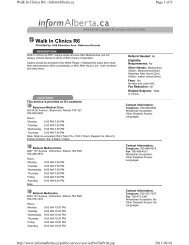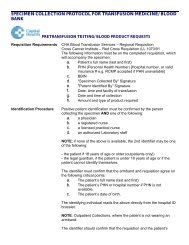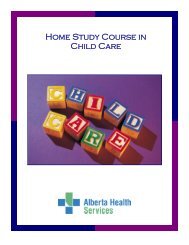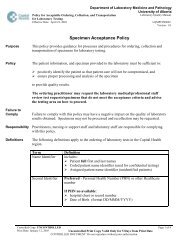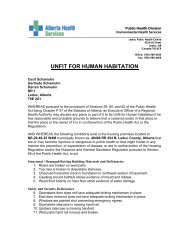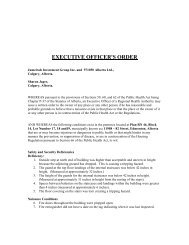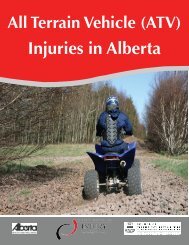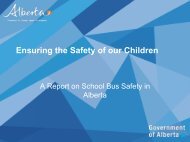'Walk and Ride Safely' Resource Kit - Capital Health
'Walk and Ride Safely' Resource Kit - Capital Health
'Walk and Ride Safely' Resource Kit - Capital Health
You also want an ePaper? Increase the reach of your titles
YUMPU automatically turns print PDFs into web optimized ePapers that Google loves.
Crossing the street safely:<br />
Cross only at pedestrian crosswalks or at corners.<br />
• Stop before stepping onto the street.<br />
• POINT – in the direction in which you are crossing to show drivers you want<br />
to cross.<br />
PAUSE – Look left, right, <strong>and</strong> left again.<br />
• Listen for traffic.<br />
• Wait until there are no oncoming vehicles or vehicles are stopped in all<br />
directions.<br />
Make eye contact with drivers so you know that they see you <strong>and</strong> they know<br />
that you see them.<br />
• PROCEED – Carefully cross the street with arm extended (walk quickly but<br />
do not run), still looking left <strong>and</strong> right.<br />
Additional information:<br />
Pedestrians must stop at driveways, alleys, <strong>and</strong> areas without curbs.<br />
• Remind children to never run out on to the street (chasing a ball, a pet, etc.)<br />
• Teach children about the dangers of crossing the street between parked cars<br />
(decreased visibility).<br />
Pedestrians should walk on the sidewalk. In areas without sidewalks,<br />
pedestrians should walk facing traffic.<br />
• Pedestrians should wear bright colours <strong>and</strong>/or reflective clothing to ensure<br />
drivers see them well.<br />
Applicable resources:<br />
‘Child Pedestrian Safety’ fact sheet (Kidsafe Connection)<br />
• ‘Pedestrian Safety - Safety Tips’ info sheet (Safe Kids Canada)<br />
• ‘Student Pedestrian Safety Journal’ activity sheet<br />
‘Point, Pause, Proceed’ video (Alberta Transportation)<br />
Notes to Educator:<br />
Assemble the pedestrian crossing in an open space in the classroom.<br />
• Place the signs you will be using in the pylon holders: Playground (child running<br />
with a ball), Pedestrian (white with parent <strong>and</strong> child carrying books), Stop, Yield,<br />
<strong>and</strong>/or Walk/Don’t Walk.<br />
• After completion of the lesson, distribute the ‘Student Pedestrian Safety Journal’<br />
(two pages) for a take home activity to be completed with parents.<br />
9



